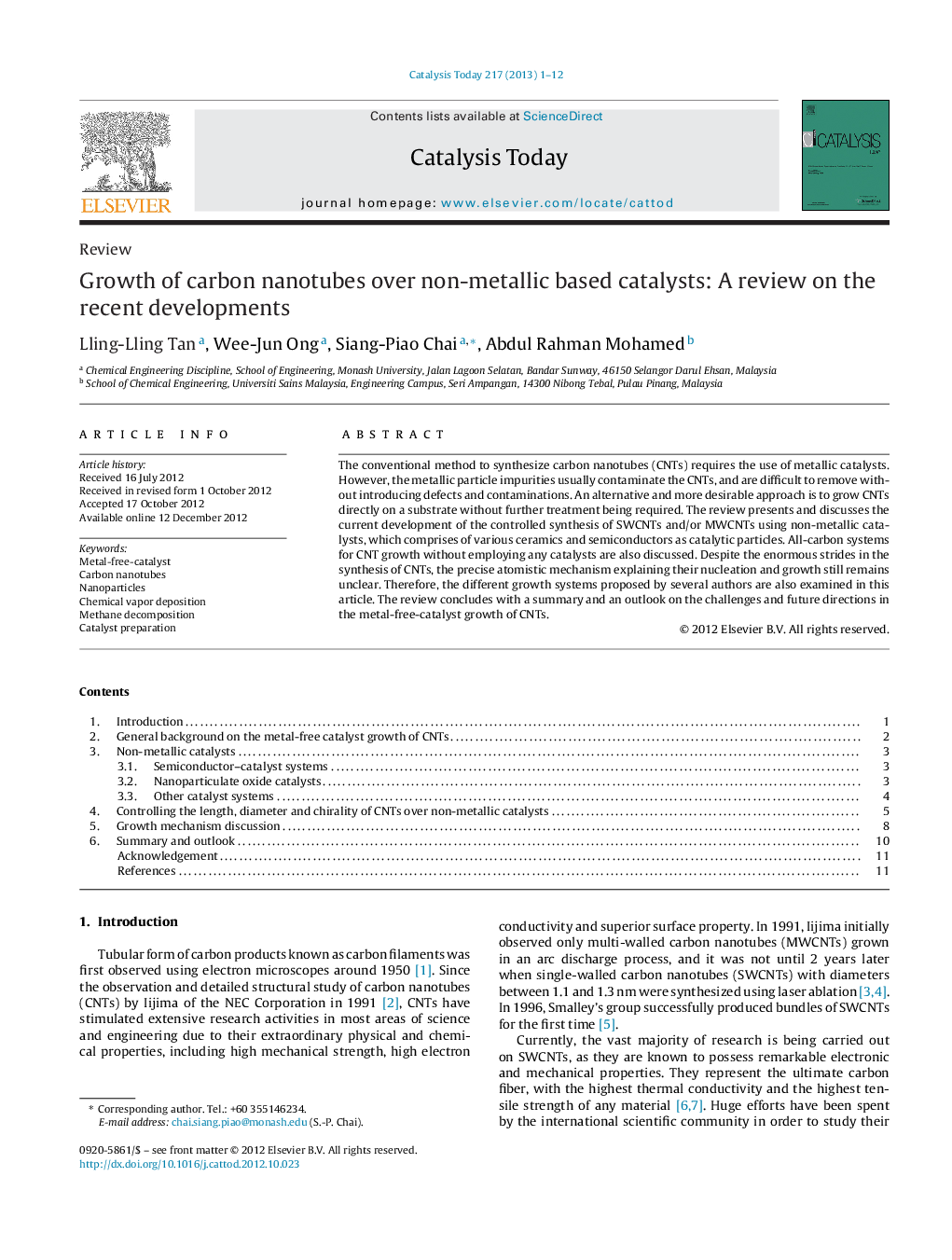| Article ID | Journal | Published Year | Pages | File Type |
|---|---|---|---|---|
| 54560 | Catalysis Today | 2013 | 12 Pages |
The conventional method to synthesize carbon nanotubes (CNTs) requires the use of metallic catalysts. However, the metallic particle impurities usually contaminate the CNTs, and are difficult to remove without introducing defects and contaminations. An alternative and more desirable approach is to grow CNTs directly on a substrate without further treatment being required. The review presents and discusses the current development of the controlled synthesis of SWCNTs and/or MWCNTs using non-metallic catalysts, which comprises of various ceramics and semiconductors as catalytic particles. All-carbon systems for CNT growth without employing any catalysts are also discussed. Despite the enormous strides in the synthesis of CNTs, the precise atomistic mechanism explaining their nucleation and growth still remains unclear. Therefore, the different growth systems proposed by several authors are also examined in this article. The review concludes with a summary and an outlook on the challenges and future directions in the metal-free-catalyst growth of CNTs.
Graphical abstractFigure optionsDownload full-size imageDownload high-quality image (129 K)Download as PowerPoint slideHighlights► We review the different non-metallic catalysts used in the growth of carbon nanotubes. ► We discuss the growth of carbon nanotubes with controlled length, diameter and chirality. ► We emphasize on the growth mechanism and highlight contradicting models. ► We describe the major obstacles for the metal-free-catalyst growth of carbon nanotubes.
